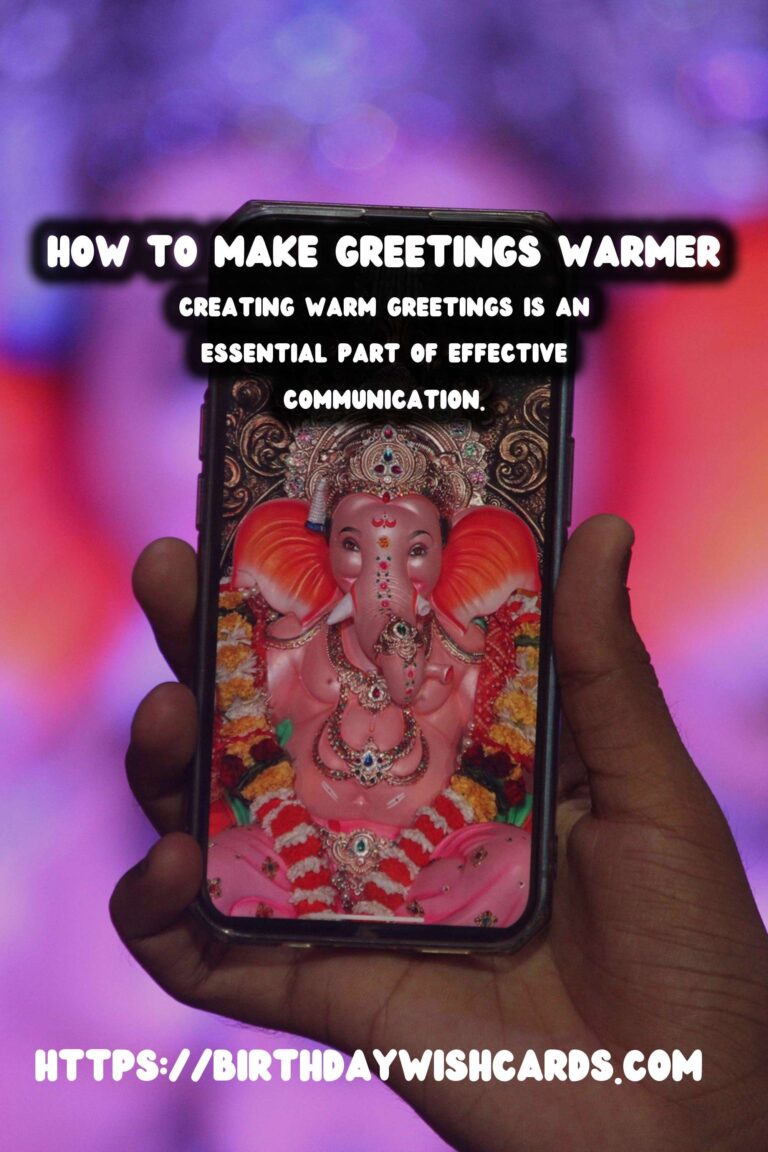
Creating warm greetings is an essential part of effective communication, whether in personal interactions or professional environments. The way we greet others sets the tone for our conversations and can significantly influence relationships.
Understanding the Importance of Warm Greetings
Warm greetings serve several important functions:
- They establish a friendly tone.
- They help in building rapport.
- They create a welcoming environment.
In a world where first impressions matter, a warm greeting can make all the difference.
1. Use Personalization in Your Greetings
One of the most effective ways to make your greetings warm is to personalize them. Instead of just saying, ‘Hello,’ try using the person’s name.
For example, ‘Hello, John! It’s great to see you!’ instantly makes the greeting feel more intimate and genuine.
2. Adjust Your Tone and Body Language
Your tone of voice and body language play crucial roles in how your greeting is perceived. A cheerful tone paired with a warm smile goes a long way in conveying warmth.
Remember to maintain open body language, making eye contact and avoiding crossed arms. This creates an approachable atmosphere.
3. Customize Greetings for Different Situations
Consider the context of your greeting. A casual ‘Hey there!’ might work for friends, but for a formal setting, ‘Good morning, Ms. Smith’ is more appropriate. Tailoring your greeting to the situation helps in making it feel sincere.
4. Add a Thoughtful Compliment
Compliments can enhance your greeting and make the person feel valued. Simple remarks like, ‘I love your outfit today’ or ‘It’s great to see you back!’ can lift the mood of the interaction.
5. Ask about the Other Person
Showing genuine interest in someone’s well-being is an excellent way to create warmth. Instead of just saying, ‘How are you?’ try asking something specific, like, ‘How did your presentation go?’ or ‘Did you enjoy your weekend trip?’
6. Use Warm Gestures
Warm gestures can accompany your greetings beautifully. A firm handshake, a gentle pat on the back, or a light hug can enhance the warmth of your greeting, depending on your relationship with the person.
7. Make Use of Technology for Warm Virtual Greetings
In today’s digital world, warm greetings can also be conveyed through technology. A personalized email or a direct message that addresses the recipient by name and references past conversations can create a lasting impression.
8. Share Positive News or Experiences
Starting the conversation with positive news can set an uplifting tone. For example, you can say, ‘I just heard that our team won the project!’ or ‘I recently traveled to an amazing place, and I can’t wait to tell you about it.’
9. Be Mindful of Cultural Norms
Be aware of cultural differences in greetings. For instance, while a handshake is common in many Western cultures, bowing may be the norm in some Asian cultures. Understanding these differences can help you greet others in a respectful and warm manner.
10. Practice Regularly
Creating warm greetings is a skill that can be developed over time. Make an effort to practice regularly; the more you engage warmly with people, the more natural it will become.
Conclusion
Warm greetings are vital for effective communication. By personalizing your greetings, adjusting your tone, and incorporating thoughtful gestures, you can create a more welcoming and positive environment.
Remember that the goal is to make the other person feel valued and appreciated. Invest in learning and practicing these techniques, and you’ll see an improvement not only in your interactions but also in your relationships.
Creating warm greetings is an essential part of effective communication. In a world where first impressions matter, a warm greeting can make all the difference. 













